New Book Releases / Autumn 2024
If you would like to alert us to a recent or forthcoming film publication for the next round-up in winter, please contact us here. For notes on more books, see David Hudson’s monthly round-up at Criterion’s The Daily.
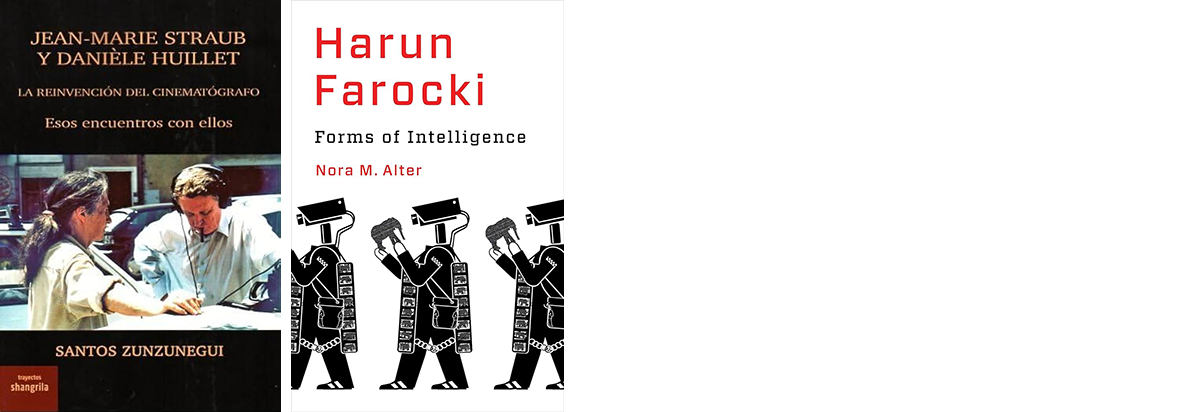
Let’s start with two highly anticipated books about figures of considerable grandeur. After all the critical attention devoted to the cinema of Danièle Huillet and Jean-Marie Straub last year, a new Spanish-language study of the filmmaker couple was released last June. Film historian Santos Zunzunegui, whose previous volume Jean-Marie & Danièle Huillet: In the Crater of the Volcano was featured in our winter 2024 overview, has published Jean-Marie Straub y Danièle Huillet. La reinvención del cinematógrafo. Esos encuentros con ellos. The reader will be confronted with a book that does not follow the Straubs’ creative adventures chronologically, but rather takes the form of a dictionary or, to use Umberto Eco’s words, an “encyclopaedia” – largely made up of the knowledge Zunzunegui accumulated about the Straubs over the years – trying to make evident the intricate network of relationships that are interwoven in their singular work.
Another major publication announced this year was Nora M. Alter’s Harun Farocki: Forms of Intelligence, a new study of one of the world’s most celebrated experimental filmmakers, Harun Farocki. The book is an incisive and comprehensive analysis of Farocki’s oeuvre, shedding new light on his media experimentation and writings across platforms and venues. Alter examines how Farocki’s work investigates film and media images: their history, nature, manipulation, changing functions, and strategic uses. On the occasion of the book release, she was interviewed by Arta Barzanji, during which she discusses her relationship with the work of Farocki.
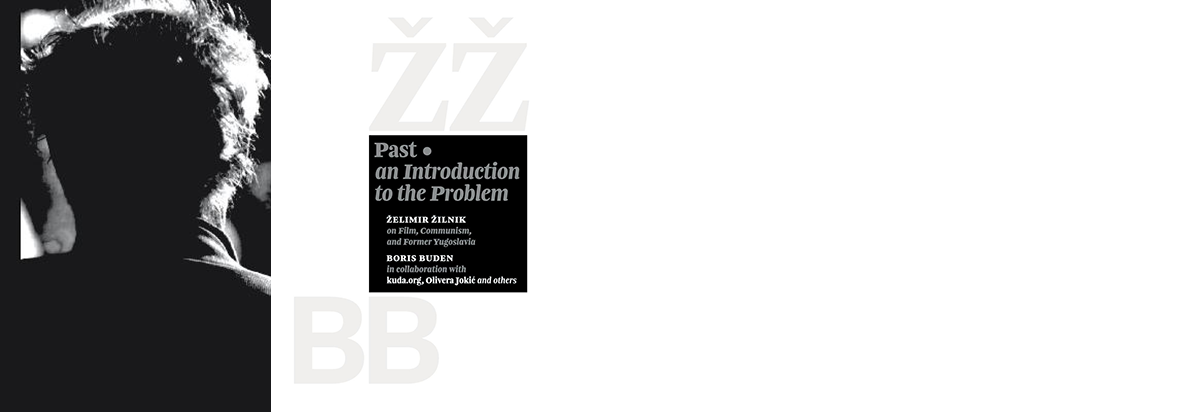
In 2004, Jean-Luc Godard’s film Notre musique explored the prospects for building bridges – both material and metaphorical – in war-torn Bosnia-Herzegovina. Referring to the violent history of Europe, the Amerindian genocide, and the Israel-Palestine conflict, the film offers a brilliant demonstration of the “principle of cinema” that Godard sets out: “to go to the light, and direct it onto our night. Our music.” Released in June and compiled by Michael Witt, Notre musique, c'est celle de tout le monde is based on a three-hour interview Witt conducted with Jean-Luc Godard about Notre musique in his studio in Rolle, Switzerland, in April 2005. In the interview, Godard discusses not only Notre musique and those who played an important role in it (notably Elias Sanbar, Juan Goytisolo, and Mahmoud Darwish) but also a wide range of other topics, including the French New Wave, the Vietnam War, the Bosnian War, Ici et ailleurs (co-directed with Anne-Marie Miéville, 1976), Israel and Palestine, his montage practice, digital technology, suicide, and the large-scale exhibition project he was working on at the time, Collage(s) de France (which became Voyage(s) en utopie). The book is in French, runs to 104 pages, contains 75 images, and includes a comprehensive set of notes.
The next book takes as its subject Serbian filmmaker Želimir Žilnik, whose essayistic approach can be compared to Godard’s. Past: An Introduction to a Problem – Želimir Žilnik on Film, Communism, and the Former Yugoslavia by philosopher Boris Buden proposes that the problem of the past now concerns everyone. With visions of a different, brighter future defeated in the Cold War and its heated afterlives, we are being offered the past as the only horizon of possibility. And what are we supposed to find in that past? Buden considers these questions in a series of essays and conversations with filmmaker Želimir Žilnik, one of the most prominent filmmakers of the “Black Wave” of 1960s socialist Yugoslavia. The book was originally published in 2013 in Serbo-Croatian under the title Uvod u prošlost (Introduction to the Past), and this year it was translated into English with a new preface by Buden and additional multi-modal content. The book is freely available as a PDF.
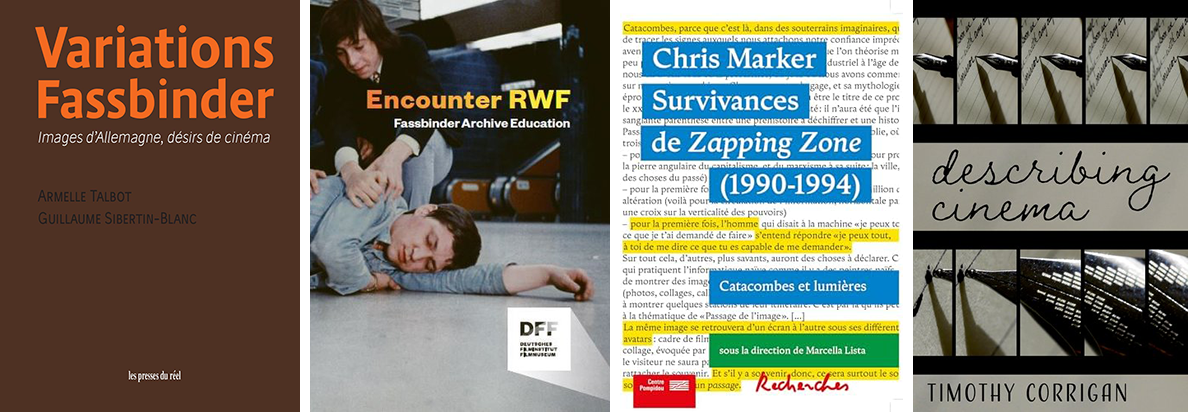
From two prominent figures of the Nouvelle vague and the Yugoslav Black Wave respectively, we venture to Rainer Werner Fassbinder and the New German Cinema. Variations Fassbinder – Images d'Allemagne, désirs de cinéma (Les presses du réel) offers a philosophico-cinematographic journey through Fassbinder’s filmic work. The new book by Armelle Talbot and Guillaume Sibertin-Blanc considers the filmmaker’s experiments with the codes of genre cinema – crime film, melodrama, sci-fi – as a way out of an “impossible” German cinema, caught between a radically discredited national cultural industry that emerged from the Third Reich and the empire wielded by the United States over the film market and the manufacture of the imaginary. The book can be ordered here.
Staying with Fassbinder, the next publication asks: “How do young people encounter the films of Fassbinder?” Aside from the films themselves, what role can objects from a collection or archive play? Educators in five European cities (Berlin, Frankfurt am Main, Paris, Vienna, and Zurich) addressed this question in a new book as part of the “Encounter RWF” project, which aims to discover which formats can be used to make Fassbinder’s films more accessible to today’s younger generation. In the process, they developed formats for engaging with the director’s work and estate and implemented them with school classes, youth groups, and students. Encounter RWF. Fassbinder Archive Education gathers insights into the ideas, approaches, and methods of the projects and makes the results of the work visible. It includes artistic confrontations with the director, his work, and the archive, as well as academic reflections on the questions raised by the project.
Prominent in our last New Book Releases with three new publications was Chris Marker, who was also keen on archival work. The next book zooms in on Zapping Zone, a work by Chris Marker commissioned in 1990 by the Centre Pompidou as part of the ‘Passage de l'image’ exhibition. Chris Marker. Survivances de Zapping Zone: Catacombes et lumières (edited by Marcella Lista) is the third installment of the ‘Recherches’ collection – the collection that accompanies the research activities carried out by the curatorial team at the Musée national d’art moderne at the Centre Pompidou. Comprising thirteen television sets, seven computer stations (Apple II GS), four light panels containing eighty slides, and ten photomontages, Zapping Zone marks the entry of digital writing into the field of art at the dawn of the World Wide Web. In many ways, the installation appears to be a manifesto for what is now known in the field of conservation-restoration as “variable media” or “unstable media.”
On a side note, and while on the subject of archives, the Michael Mann Archives have also been made available online. For now, the archive materials only include Mann’s latest film Ferrari, but the platform promises to expand to his earlier work. As for Michael Mann-related book news, Jean-Baptiste Thoret’s Michael Mann: Mirages du contemporain (mentioned in the New Book Releases Spring/Summer 2021) has been translated into English by White Lion Publishing. A translated excerpt of the original book, published on the occasion of a screening of Miami Vice in Brussels, is also available on Sabzian.
Moving on to a new book by film scholar Timothy Corrigan. In Describing Cinema, Corrigan explores the art and poetics of writing about film. The book connects to the two previously mentioned publications with case studies on Fassbinder (Die Ehe der Maria Braun) and Marker (Sans Soleil). Part theory, part rhetoric, and part pedagogy, Corrigan’s new book examines and demonstrates acts of describing scenes, shots, and sequences in films as the most common and most underestimated way viewers respond to movies. Corrigan insists that writing about film becomes thinking about film.
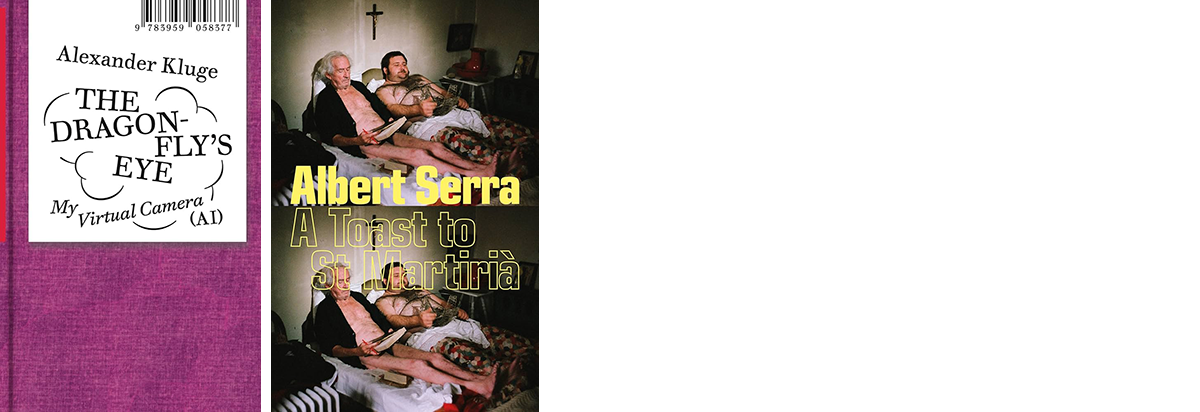
We continue our overview with two books written by filmmakers. In The Dragonfly’s Eye: My Virtual Camera (AI), the ninety-two-year-old author and filmmaker Alexander Kluge explores the cooperative capacities of the Stable Diffusion model, which uses AI to process images. Kluge’s essay in the book reflects on the idiosyncrasies of these new types of images, where chance factors and errors create subjunctive forms, resulting in open images that are hard to place. In a series of stories combining images and text – ranging from cases of phantom pregnancy in East Germany, via Philemon and Baucis, to the mercenary Yevgeny Prigozhin – he examines how the “virtual camera” opens up a space in which stories can be told and imagined in a new way.
A Toast to St Martirià is an improvised speech given by the cult Catalan filmmaker Albert Serra at the St Martirià fiesta in Banyoles, the town of his birth. Conveying his subversive attitude and impulsive lust for life, it is a journey through his formative years and early relationships – established in the nightlife of his hometown – that have shaped his conception of cinema, art, and life. “Cinema should be this: making the perception of time and space more intense.” The book includes an afterword by Alexander García Düttmann.
We close this section of new books with a recent publication featuring the writings of one of Serra’s great heroes, Pere Portabella. Impugnar les normes: Intervencions sobre art, cinema i política brings together dozens of texts written by Portabella over sixty years.
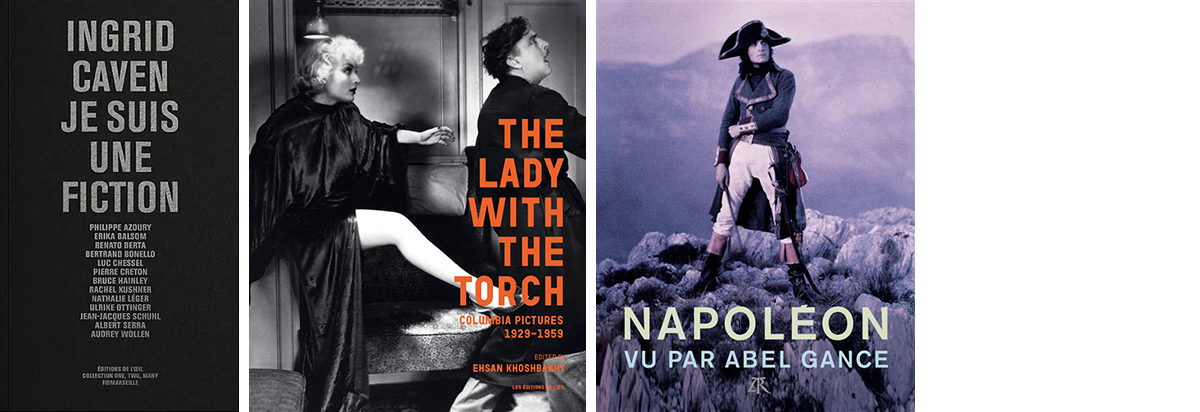
Next are two new publications from a regular contributor to New Book Releases, Les éditions de l’œil. This time, we highlight two books that were published on the occasion of two film festivals this year: FIDMarseille and Locarno. Albert Serra, mentioned above, is one of the contributors to Ingrid Caven. Je suis une fiction, part of the “One Two Many” series by FIDMarseille, edited by Cyril Neyrat, Corinna Corinne, and Giovanni Marchini Camia. In June, Ingrid Caven was an honored guest at FIDMarseille for a program retracing over fifty years of her acting and singing. The new book is a tribute to the elusive actress, singer, and writer, who has worked with Rainer Werner Fassbinder, Werner Schroeter, Daniel Schmid, Jean Eustache, Peer Raben, Ulrike Ottinger, and many other artists of her time.
Published on the occasion of the retrospective at the 77th Locarno Film Festival (2024), Ehsan Khoshbakht’s The Lady With the Torch: Columbia Pictures 1929-1959 accompanies the Locarno Film Festival’s celebration of Columbia Pictures’ centenary. The book focuses on the period of the retrospective, 1929-1959, and expands on its directors and directions. This collection of nineteen essays examines the particularities of Columbia in relation to what is generally known as the “Genius of the System.”
The next book in our overview is arguably about one of the greatest films in the history of cinema. Proof of this is the eagerly anticipated round of screenings at festivals and cinemas around the world (from Cannes to Bologna). Since the rare screenings reserved for professionals in May 1927, the legendary 7-hour “Grande Version” intended by Gance has remained invisible, seemingly gone forever – until the Cinémathèque française set about resurrecting it in 2012. In May, publishing house La Table Ronde released Napoléon, vu par Abel Gance, a richly illustrated collective work that retraces the adventure of this film and its unfortunate, eventful history through a century of cinema. An extensive review of the book by Paul Cuff can also be found here.
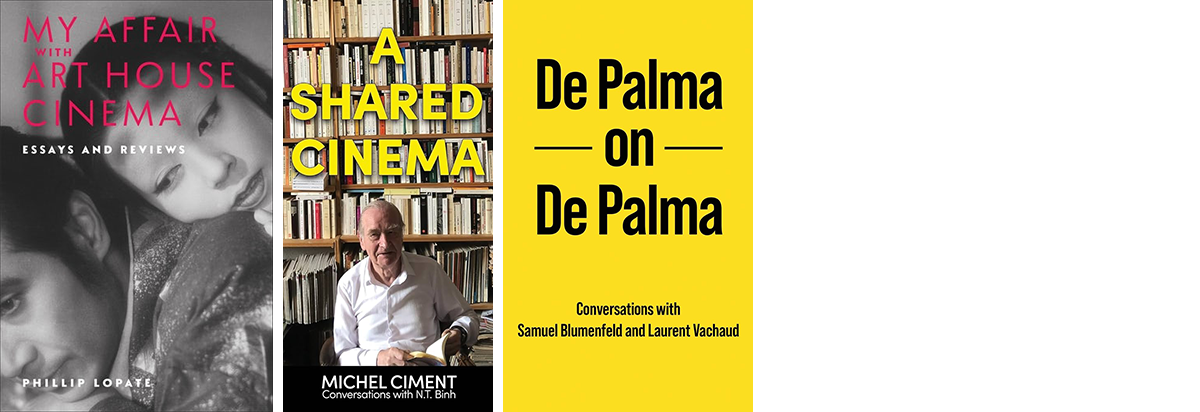
My Affair with Art House Cinema. Essays and Reviews traces critic and essayist Phillip Lopate’s lifelong passion for cinema. This collection presents Lopate’s selected essays and reviews from the last quarter-century. With an essayist’s sinuous prose style, Lopate captures the formal mastery, artistic imagination, and emotional intensity of films like Yasujirō Ozu’s Late Spring, David Lynch’s Mulholland Drive, and Andrei Tarkovsky’s Solaris, as well as works by contemporary filmmakers such as Maren Ade, Hong Sang-soo, Hou Hsiao-hsien, Christian Petzold, Paolo Sorrentino, and Jafar Panahi. Lopate also reflects on the work of fellow critics, including Roger Ebert, Pauline Kael, and Jonathan Rosenbaum.
After our announcement of legendary French critic Michel Ciment’s Go West this spring, the publishing house the Sticking Place, run by Paul Cronin, presents A Shared Cinema, an interview book with Ciment edited by N.T. Binh. The book takes us on a journey through Ciment’s life, starting as a film-obsessed youngster in 1950s Paris and recounting his early experiences in the United States and as a teacher. It covers his long-standing association with Positif magazine, his seminal interview books with John Boorman, Francesco Rosi, Elia Kazan, Jerry Schatzberg, and Stanley Kubrick, as well as his documentaries on Kazan, Joseph Mankiewicz, and Billy Wilder. The book also explores his decades-long work on television and radio, and his time as a juror and consultant at some of the world’s most important film festivals. An extract from the book was previously published in Cineaste and is available here. On this occasion, the book has also been reissued in its original French version by Editions Rivage (May 2024) after its first publication ten years ago.
The Sticking Place also has three forthcoming books on Brian De Palma. These include a translation of an interview book with De Palma, a translation of Nathan Réra’s study of De Palma’s Casualties of War, and a collection of essays by Adrian Martin and Cristina Álvarez López.
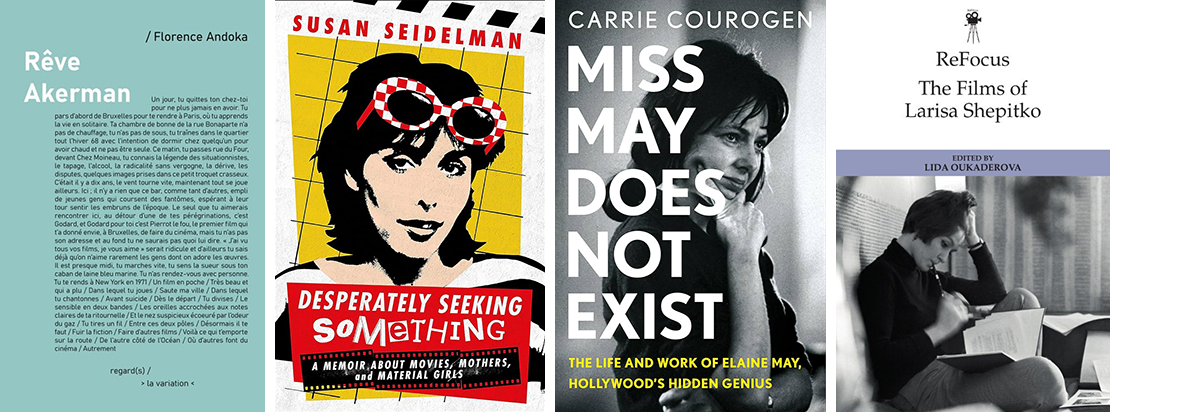
Next are a round of books centered on woman filmmakers. The first book, Rêve Akerman (written by Florence Andoka) is a fictional work that follows Chantal Akerman’s journey through her filmography, from her first trip to New York in 1971, where as a young filmmaker she discovered the films of Michael Snow, Andy Warhol, and Jonas Mekas, all of whom would later nourish her filmmaking, to No Home Movie in 2015, in which she filmed her mother, to whom she also dedicated a book: Ma mère rit (My Mother Laughs). Rêve Akerman is a reaction, that of an eye that imagines a life through a work of art, experiencing its sensibility and reconstructing an era.
Desperately Seeking Something: A Memoir About Movies, Mothers, and Material Girls (St. Martin’s Press) is a funny and insightful first-person story by American filmmaker, producer, and actress Susan Seidelman. The trailblazing movie director of the 1980s and ’90s whose fearless punk drama, Smithereens became the first American indie film to compete at Cannes, and smash hit Desperately Seeking Susan led to a four-decade career in film. Her genre-blending films reflect a passion for classic Hollywood storytelling, mixed with a playful New Wave spirit, informed by her years living in downtown NYC. Desperately Seeking Something is a vibrant portrait of the city and a keen perspective on the times she’s lived through.
From the same publisher, in the same month came Miss May Does Not Exist: The Life and Work of Elaine May, Hollywood's Hidden Genius by Carrie Courogen. As the title suggests, the book is a biography of comedian, director, actor, and writer Elaine May, one of America’s greatest comic geniuses. Known as the director of A New Leaf, The Heartbreak Kid, Mikey and Nicky, and Ishtar, she was also hired as a script doctor on countless films like Heaven Can Wait, Reds, Tootsie, and The Birdcage. Conducting countless interviews, Courogen creates a poignant portrait of the way women were mistreated and held back in Hollywood.
Our next book is a collection of critical chapters on Larisa Shepitko, one of the most significant Soviet (Ukrainian born) filmmakers. ReFocus: The Films of Larisa Shepitko, edited by Lida Oukaderova is part of Edinburgh University Press’s prolific ReFocus series, which features monthly releases. The book on Shepitko examines her entire oeuvre, looking not only at her best-known films such as Wings and The Ascent but also lesser known, censored, and unfinished productions such as The Motherland of Electricity, You and I, and Farewell (finished by Elem Klimov). The book is the first volume in English to offer a comprehensive, methodologically diverse analysis of Shepitko’s oeuvre.
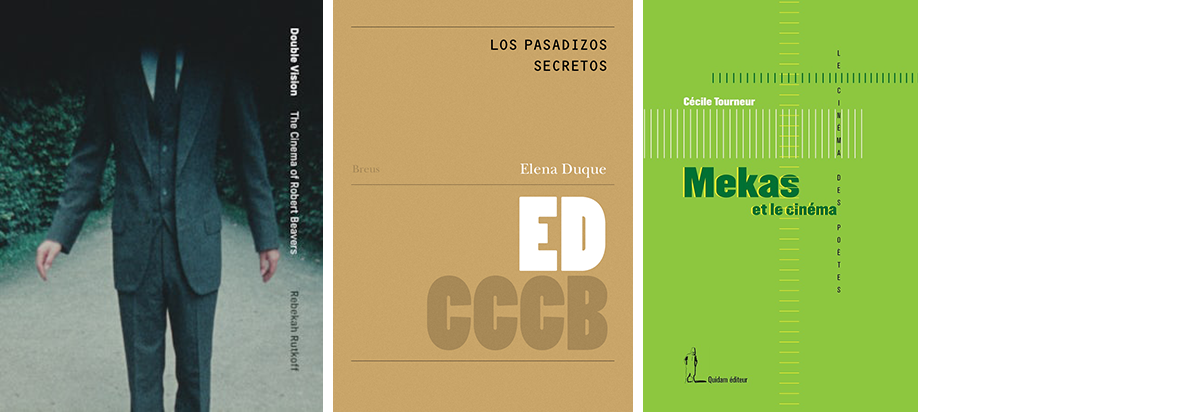
After the recent attention given to the American experimental filmmaker Gregory J. Markopoulos through a retrospective at exf f. - tage des experimentellen films frankfurt, we’re delighted to announce a new volume on Markopoulos’s lifelong partner and collaborator, Robert Beavers. Rebekah Rutkoff’s Double Vision: The Cinema of Robert Beavers is a lavishly illustrated account of one of avant-garde film’s most original outsiders. In Double Vision, Rutkoff – who is the first scholar to have full access to Beavers’s writing archive – reveals how Beavers’s films explore non-optical seeing – awareness itself – as an outcome of cinematic sight. Rutkoff uses the concept of “double vision” to explore the poetic feedback loop between Beavers’s filmmaking and writing practices, examine his life story and art alongside those of Markopoulos, and demonstrate how his films defy standard art historical genealogies and binary thought. Beavers’ work will be featured in a retrospective at Anthology Film Archives from September 26 to 29.
Norman McLaren said that “animation is not the art of drawings that move, but the art of movements that are drawn.” Elena Duque, filmmaker and professor specialized in experimental animation, proposes a journey in her new book Secret Passages: Notes on Experimental Animation that begins in the first decade of the twentieth century, with the first animation studies, and takes us to the work of analog experimental animation through the analysis of a series of films created by internationally recognized artists. The book is available in English and Spanish.
We conclude this section with a new volume on Lithuanian-American filmmaker Jonas Mekas. Beginning with the collection of poetry Idylls of Semeniskiai, which recounts memories of rural life in Lithuania, Cécile Tourneur’s Mekas et le cinéma explores the profound connection with nature in Mekas’s work. This connection is evident not only in his films, shot both in Lithuania and in New York, where he attempts to rediscover sensations associated with his native country – such as in Central Park – but also through his broader thematic focus.
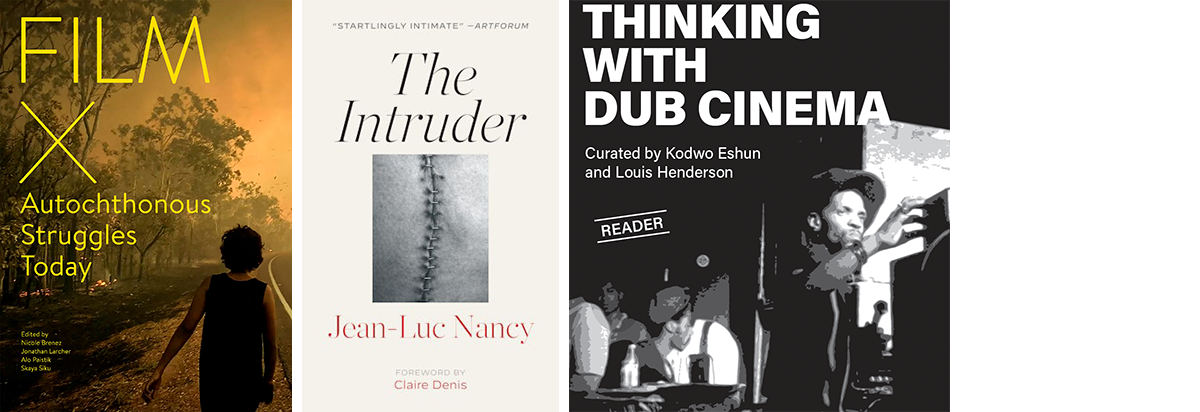
A much-anticipated book that was announced in the Autumn New Book Releases of last year is now finally out. Film X Autochthonous Struggles Today, edited by Nicole Brenez, Jonathan Larcher, Alo Paistik, and Skaya Siku, brings together, for the first time, filmmakers, activists, film curators, and scholars who share a common interest in filmmaking practices that emerge from and participate in the various struggles that Autochthonous / Indigenous / Native / Aboriginal / First Nations peoples and communities face worldwide. This book addresses the need to take a global look at the diverse ways of filmmaking that fight for land rights and against environmental injustice (Brazil, Morocco, Taiwan, USA); that resist neocolonial domination and economic and political exploitation (Japan, Philippines); that offer a counterpoint during low-intensity or drawn-out armed conflicts (Colombia, Mexico); that invent strategies of counter-information and representation (Australia, Canada, Russia, Samoa); and that strive for visibility.
In 2004, Claire Denis made a film based on Jean-Luc Nancy’s L’intrus, a now-classic essay he wrote about his heart failure and the “intrusion” of a transplanted heart. The English translation of Nancy’s short book has been reissued by Fordham University Press with a new foreword by Denis and new pieces from both Nancy and Denis on the film’s conception and making.
For the program Thinking with Dub Cinema, curated by Kodwo Eshun and Louis Henderson in the context of the Courtisane festival 2024 (March 27-31) and the research project Echoes of Dissent (KASK & Conservatory / School of Arts Gent), Kodwo Eshun, Louis Henderson, and Stoffel Debuysere compiled a reader. “How to think dub cinema? How to think dub in, or as, or with, cinema? How, and in what ways, to think cinema by way of dub? How, and in which ways, does dub, understood not as a genre but, instead, as a sonic process that undoes the body of song, unmake the temporal structures of film?” Thinking with Dub Cinema: A Reader is freely available upon request. If you want a PDF copy, you can send an email to stoffel[dot]debuysere[at]gmail[dot]com.
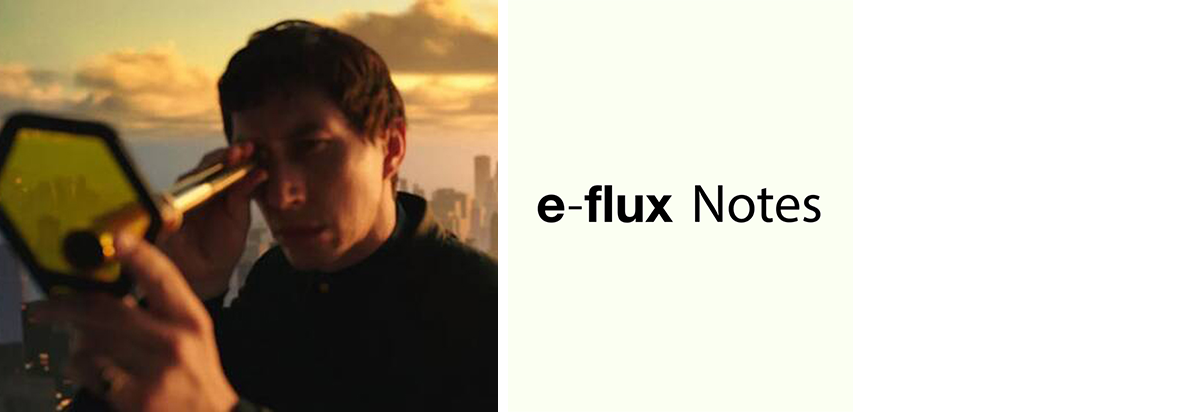
Our reporting of film magazine news hasn’t been very upbeat of late. Unfortunately, this one starts on a somber note as well. In the editorial of issue 19 of the Italian film journal Film Parlato. Rivista di cinema, editor-in-chief Lorenzo Esposito reflects on “the very appropriateness of bringing out a film magazine today,” noting that many magazines weigh the question “whether to stop, and each issue is, without any rhetoric, to be considered the last.” The content of this issue, however, brings us back to where we started in this edition of New Book Releases, with Farocki, Godard and the Straubs, conflict and images, Ici et ailleurs, and more.
While Film Parlato contemplates closing down, a new magazine was launched by the publishing platform e-flux last June. E-flux Film Notes promises to be a publication dedicated to exploring the intersection of cinema and contemporary art. Film Notes builds on e-flux’s extensive engagement with the moving image, examining the convergence of cinema, which is traditionally housed in movie theaters, and visual art, which is conventionally displayed in galleries and museums. To gain a sense of the new magazine, you can check their first summer reading list, published at the end of July.

